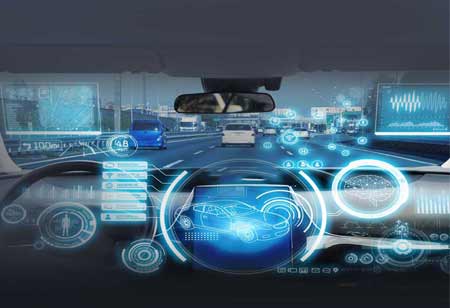THANK YOU FOR SUBSCRIBING
THANK YOU FOR SUBSCRIBING
Be first to read the latest tech news, Industry Leader's Insights, and CIO interviews of medium and large enterprises exclusively from Auto Tech Outlook

By
Auto Tech Outlook | Tuesday, March 07, 2023
Stay ahead of the industry with exclusive feature stories on the top companies, expert insights and the latest news delivered straight to your inbox. Subscribe today.
As an IEV ecosystem develops, many additional usage scenarios will emerge beyond mobility.
FREMONT, CA: Electrification's core objectives include maximizing the vehicle's range per charge, charging speed, and convenience during charging. In addition to electrification, IEVs can be infused with intelligence—such as smart cockpits and autonomous driving—to make driving more enjoyable and convenient. As IEVs develop a sophisticated computing capability, an application ecosystem will emerge, similar to how mobile applications have developed for mobile phones. An IEV ecosystem will yield many uses beyond mobility.
Tesla has indeed been developing along the same path. Tesla began with a focus on electrification during its early years. During that time, Tesla relied heavily on external supply chains—such as MobilEye—to deliver intelligence. Following Tesla's market share growth and the maturation of its battery technologies, the company shifted its R&D efforts to intelligence, particularly autonomous driving. In the future, as Tesla deploys more standard computing platforms and gains market share, I expect them to shift its focus to the ecosystem.
This trend has led to many technologies enabling IEVs.
Battery: Due to their compact size, semi-solid-state batteries can deliver much higher energy density per unit area than the liquid electrolytes used in existing EV batteries. Solid-state batteries are under development. CATL announced that it would release the Qilin battery, enabling electric vehicles to cover up to 1,000 kilometers on a single charge. Semi-solid and solid-state batteries could further extend this range and eliminate the range anxiety associated with electric vehicles.
Packaging: Battery packaging technologies are crucial for IEVs to be space-efficient, reliable, and safe. CATL developed cell-to-pack (CTP) technology that directly integrates battery cells into packs. Developed by BYD, cell-to-body (CTB) technology enhances the use of vehicle space by integrating batteries directly into the vehicle body floor panel. With Tesla's Cell to Chassis (CTC) technology, batteries are directly integrated into the vehicle chassis, resulting in a 55 percent cost and 35 percent space reduction. By integrating batteries with electric vehicles, Tesla has projected a 55 percent cost and a 35 percent space reduction.
Fast charging: Using fast charging can eliminate range anxiety in IEV users. High power-charging infrastructure is the main technical constraint to fast charging. It usually takes the support of different governments to deploy high-power charging infrastructure, as it requires an upgrade to the power grid. Among China's charging infrastructure projects, high-power charging stations have been installed along its highways, boosting the penetration rate of IEVs.
Autonomous driving: Autonomous driving has been dominated by LiDAR-based solutions since its inception. In recent years, Tesla has demonstrated the feasibility of vision-based autonomous driving. In particular, Tesla has achieved high perception accuracy by using transformer networks. Likely, many companies will also invest in transformer architectures. Tesla's success is primarily due to the huge amount of data it has collected to refine its system, not its network architecture. As a result, data collection and infrastructure are the key competition points for autonomous driving technologies.
Electrical and electronic (EE) architecture: An EE architecture combines electronics and network components into an integrated system that meets the requirements of many vehicle functions. Centralized EE architectures have gained several technical advantages, including hardware and software separation, more efficient computing resource utilization through virtualization, high-speed data exchange, and flexible sensor and actuator interfaces.
 Copyright © 2025 AutoTech Outlook. All Rights Reserved | Privacy Policy | Subscribe | Sitemap | About us | Feedback Policy | Editorial Policy
Copyright © 2025 AutoTech Outlook. All Rights Reserved | Privacy Policy | Subscribe | Sitemap | About us | Feedback Policy | Editorial Policy 
However, if you would like to share the information in this article, you may use the link below:
https://www.autotechoutlookapac.com/news/the-future-of-ev-technology-nwid-1270.html




